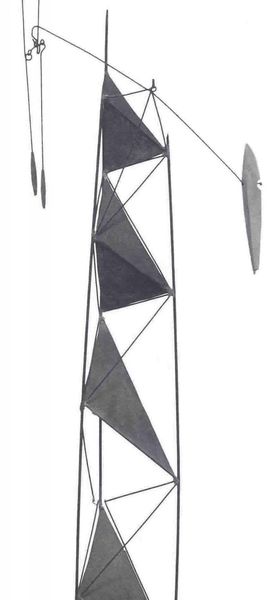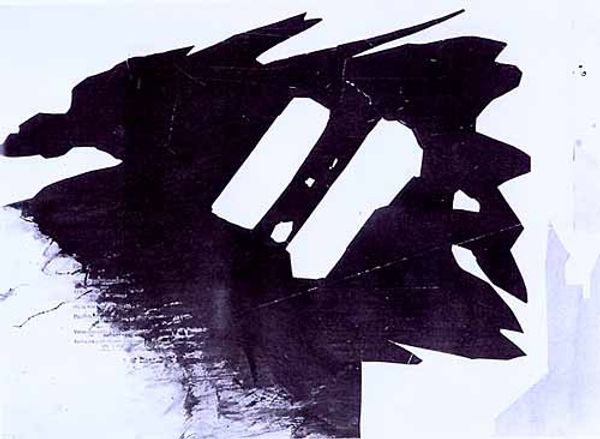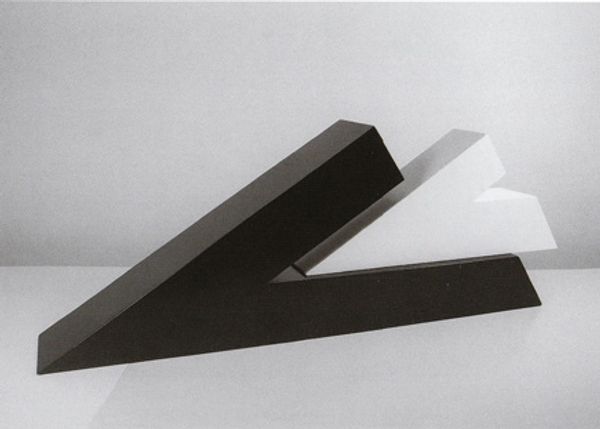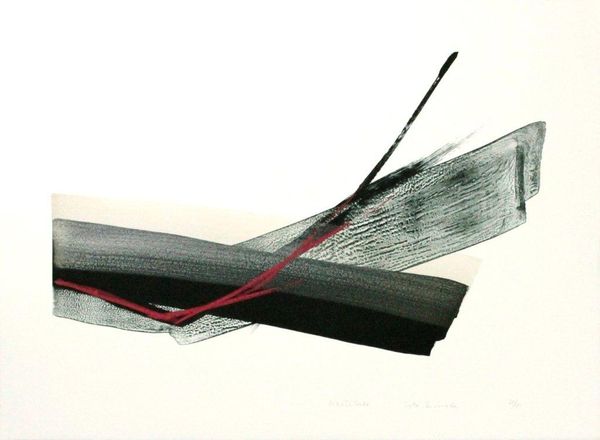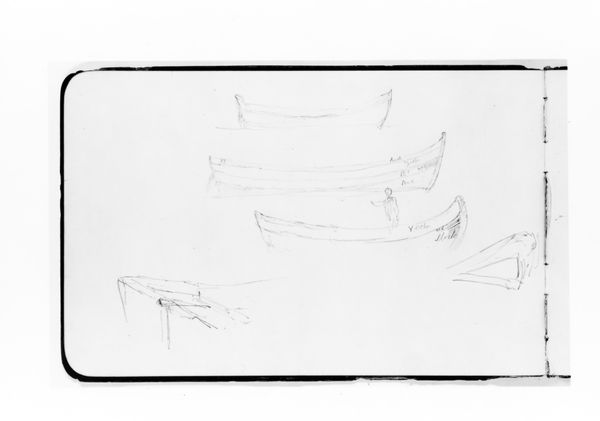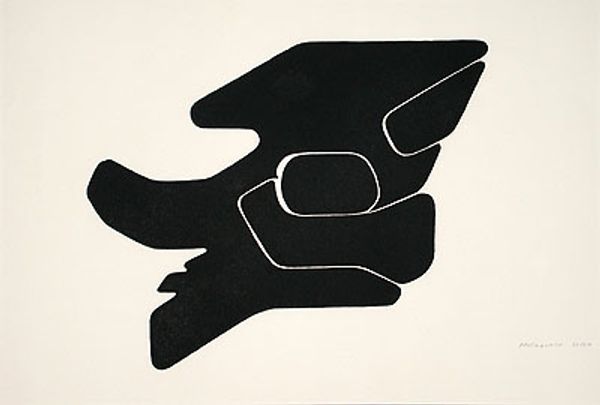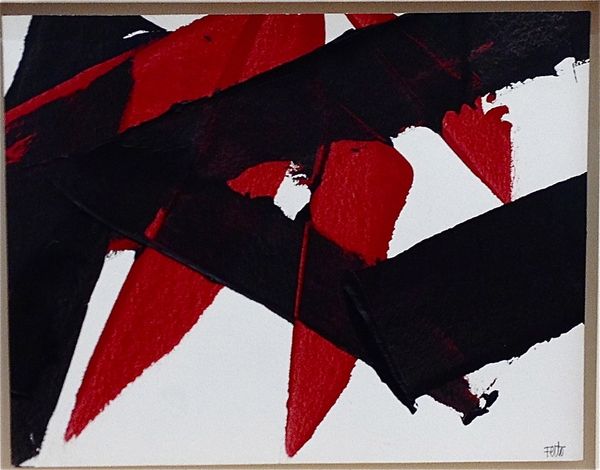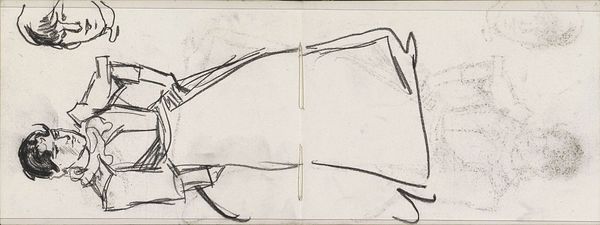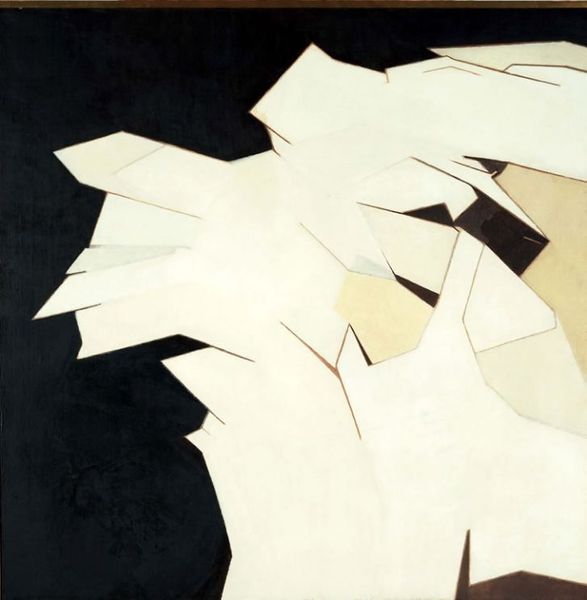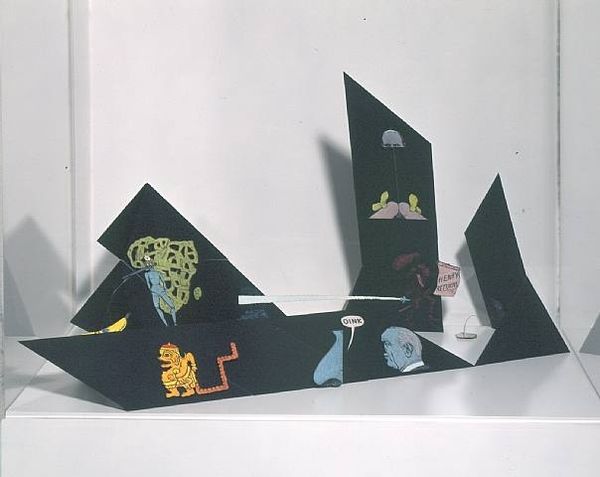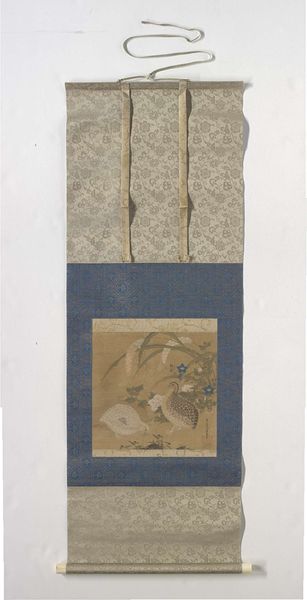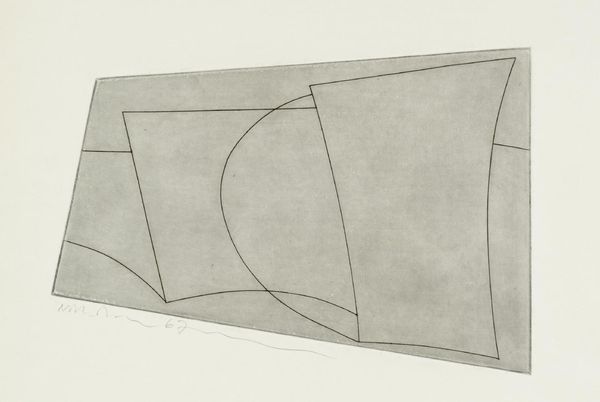
mixed-media, collage, assemblage, paper
#
mixed-media
#
negative space
#
collage
#
conceptual-art
#
rough brush stroke
#
assemblage
#
stencil
#
paper
#
abstraction
Copyright: Herve Telemaque,Fair Use
Curator: Hervé Télémaque created "L'Ile aux Nègres" in 1993. It’s a mixed-media piece incorporating paper and collage elements, very striking. Editor: My immediate reaction is how deceptively simple it seems. The geometric shapes create a visual puzzle against the stark white backdrop. It's stark, almost melancholic. Curator: That starkness, I think, speaks to Télémaque’s engagement with post-colonial discourse. Consider the title. "Nègres" – it’s a charged word. It’s a reclaiming, a confronting of a history marked by trauma. Editor: The materials, though—the paper and collage—bring a tactile quality that offsets the title's heaviness. See how the artist juxtaposes shapes—the play of the angles and planes creates interesting textures. It gives the work a raw, unfinished quality. Curator: Exactly. The apparent fragility of the materials underscores the precariousness of identity, particularly in the diaspora. And think about the political context: Télémaque, born in Haiti, spent much of his life in exile, and that displacement permeates his work. "L'Ile aux Nègres" engages with that lived experience, the search for belonging in a world marked by inequality. Editor: The negative space, though, plays just as important a role. The stark white serves not merely as background, but it emphasizes the isolation of the origami shapes. It creates a visual tension. Do you think this refers to being rootless and separated? Curator: Most certainly, particularly in light of Télémaque’s conceptual framework. His artistic production must be read in light of cultural identity formation. What can the act of constructing with paper signify, particularly paper as a globalized, mass-produced, flattened surface of modernity? Editor: Yes. And as for how the forms are positioned and spatially organized, they allow us, perhaps invite us, to come to terms with such modern flattened state, and begin a process of spatial and spiritual orientation. A very engaging visual encounter, altogether! Curator: Indeed. This piece encapsulates a poignant chapter in Télémaque’s larger commentary on power, identity, and memory.
Comments
No comments
Be the first to comment and join the conversation on the ultimate creative platform.
